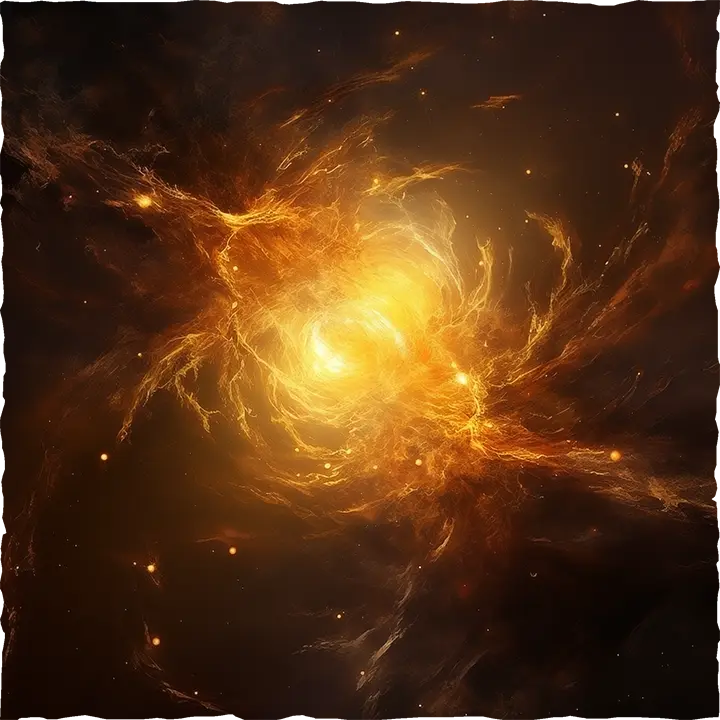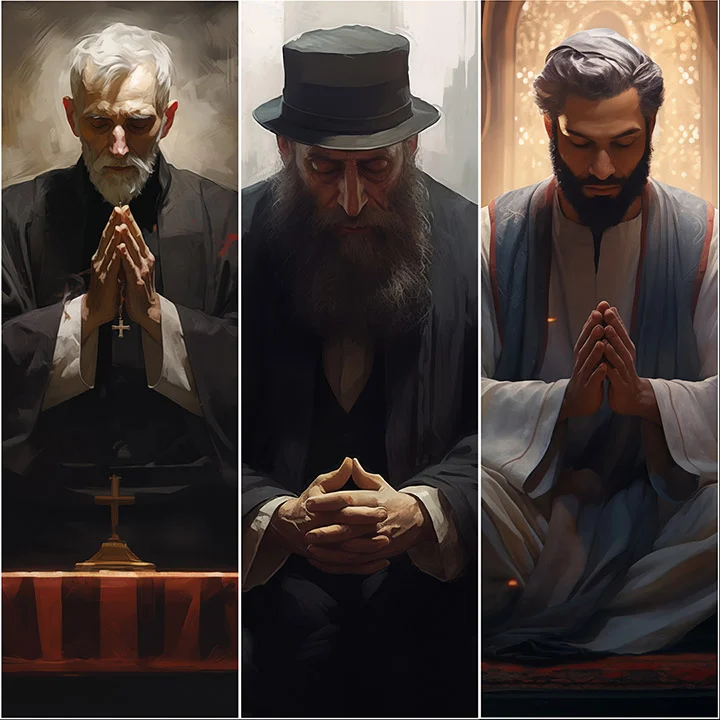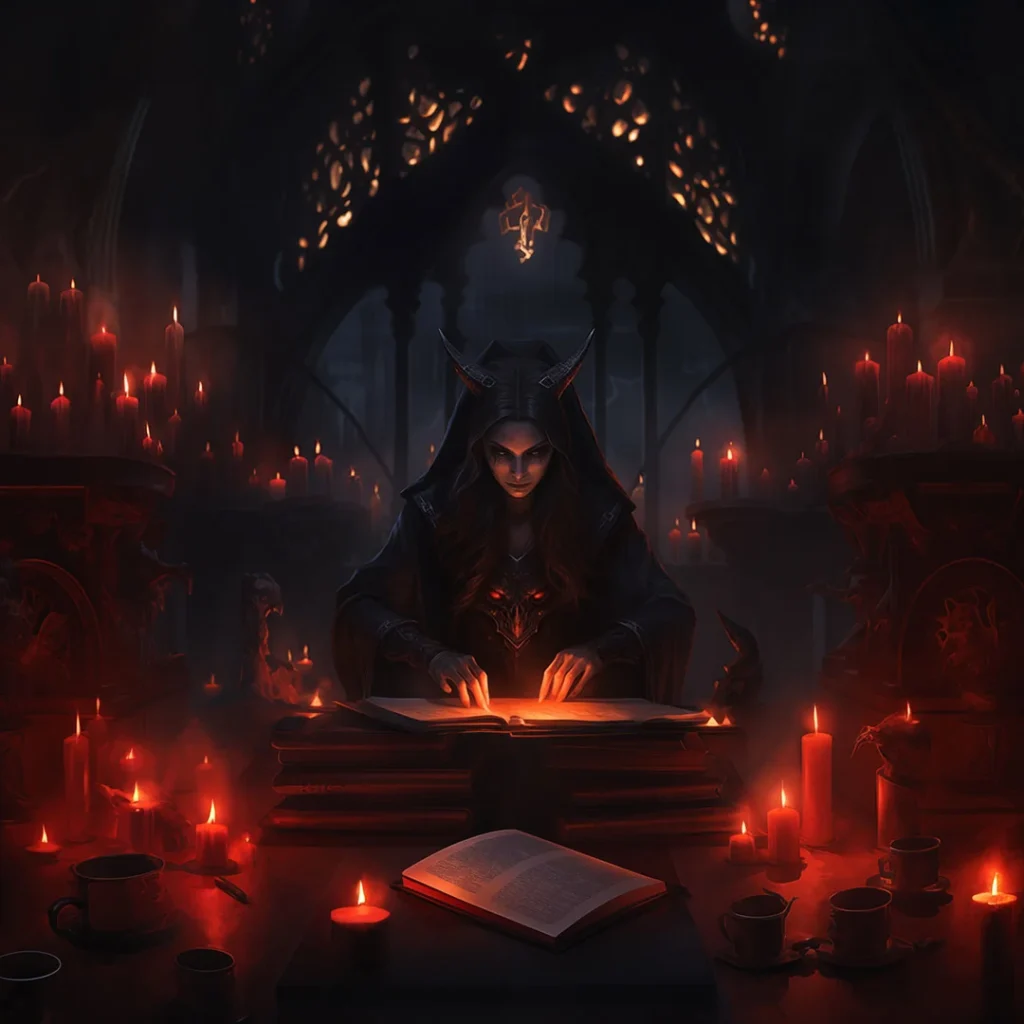THE QUEEN OF HEAVEN
Mary – The Holy Virgin, Queen of Heaven, and the ‘Mother of God’.
Pretty big titles, right?
Step into a Catholic or Orthodox church, and you’ll see just how significant she is.
Countless icons and statues of her holding an infant Jesus are scattered all around, with candles lit to honor her.
But who is she really, and where did all these grandiose titles come from?
Are they rooted in biblical scripture, or are they man-made doctrines implemented by the churches?
Buckle up!
Because we’re about to uncover the truth behind this pillar of ‘Christian’ faith.”
The Mother of the Church
“O Mother of Perpetual Help, thou art the dispenser of all the gifts” … “”I may ever invoke thy most powerful name, which is the safeguard of the living and the salvation of the dying.”… “”In thy hands I place my eternal salvation, and to thee I entrust my soul.”
What do you think about this prayer? Is it simple veneration or devotional worship?
I mean, it’s clearly mentioned to “entrust” your soul… And we are not talking about God but Mary here.
These lines are from “Our Lady of Perpetual Help” a prayer specifically directed to Mary.
Both Catholics and Orthodox regard Mary as the best intercessor, holding a special place of veneration.
Wondering the reasons for it? Here’s why:
- The Theotokos: Mary was affirmed as the ‘Mother of God’ during the Council of Ephesus in 431 AD. This makes her an unparalleled intercessor, with followers believing Jesus would do anything to please his mother.
- Immaculate conception: Mary was conceived free from Adam and Eve original sin. For the church, it’s a fact and it reinforces her special position. This dogma was formally declared by Pope Pius IX in 1854.
- Perpetual Virginity: Both Catholics and Orthodox believe Mary remained a virgin before, during, and after Jesus’ birth. This doctrine gained traction as early as the 4th century and was affirmed by Pope Martin I during the Lateran Council in 649 AD.
- Assumption of Mary: Since Mary was sinless, and her special position in the eyes of God – The Roman Catholics believe that she was instead taken up to heaven like Enoch and Elijah before her. That’s why Pope Pius XII declared it an official dogma on November 1, 1950.
It all makes sense now!
If these doctrines are backed by the scriptures, it’s no wonder the churches put her on a pedestal.
In fact, Pope Francis dedicating his whole pontificate not to the Father, but to the “Mother of the Church” would seem natural, since she is the perfect intercessor with Jesus.
But are all those claims in the Bible? Let’s find out!


What Does the Bible Really Say?
Theotokos, Immaculate conception, Perpetual virginity, Assumption – With all these religious doctrines, I’m sure the Bible must tell us a lot about the mother of Jesus, right?
Well, not really… In facts we look it up ourselves we see:
- Mary as a mediator/intercessor:
Right off the bat, the Bible says in 1 Timothy 2:5, “For there is one God, and one mediator between God and men, the man Christ Jesus.” Hebrews 7:25 says the same thing by the way.
Pretty clear the Bible want us to see Jesus as the sole intercessor between us and the Father.
- The Assumption of Mary:
To be completely honest with you, I had a hard time finding any information in the Bible on thIS topic. Why? Because there IS none… Zero, nothing, nada. This doctrine Has absolutely 0 biblical back up and was purely made up by the Church. Great Stuff!
- The Perpetual Virginity of Mary:
If you thought the “Assumption of Mary” was the only Church-made-up doctrine, think again…
Matthew 1:24-25 says, ‘And Joseph awoke from his sleep and did as the angel of the Lord commanded him, and took Mary as his wife, but kept her a virgin UNTIL she gave birth to a Son; and he called His name Jesus.’
If I say “I didn’t drive a car until I was 18”, does it mean I never drove a car in my life?
In Matthew 13.55-56 and Mark 6.3, we also see that Jesus clearly had brothers and Sisters.
And yes, I know some Catholic apologist like to say that they come from a previous marriage or something.
Cool! Where do you see that in the scriptures?
Pretty sure such detail wouldn’t be left out by the apostles who wrote the Gospel…
- Mary special relationship with Jesus
AGAIN, the bible tells us a different story. Luke 8.19-21 clearly states “And His mother and brothers came to Him, and they were unable to get to Him because of the crowd. And it was reported to Him, ‘Your mother and Your brothers are standing outside, wishing to see You.’ But He answered and said to them, ‘My mother and My brothers are these who hear the word of God and do it.’” You can also check Matthew 12.46-50, and Mark 3.31-35.
Seems Jesus had a different perception of who is family was.
- Mary was sinless:
For this one, how about hearing from Mary herself?
“My soul exalts the Lord, And my spirit has rejoiced in God my Savior.” Luke 1.46-47.
Why would someone sinless need a savior? Does a healthy person need a doctor?
So, let’s break it down. We got zero mentions of Mary being taken up to heaven or being sinless according to the scriptures.
Should we still pray for her?
If you don’t care about the 10 commandments (you can check Exodus 20.3-5), sure, go ahead.
And let’s not forget what God said about talking with the dead (Leviticus 19.31). It’s basically necromancy.
But what about all her titles then? Is she not the “Queen of Heaven”?
Let’s find out, and uncover its dark origins.
The Queen of Heaven
Is this title Biblical? The short answer is yes. But not to describe who you think.
See, ‘The Queen of Heaven’ is mainly mentioned in the Old Testament – long before Mary’s birth.
According to Prophet Jeremiah, the Lord said this about her: ‘Thus says the Lord of hosts, the God of Israel, saying: ‘You and your wives have spoken with your mouths and fulfilled with your hands, saying, “We will surely keep our vows that we have made, to burn incense to the queen of heaven and pour out drink offerings to her.” You will surely keep your vows and perform your vows!’’ (Jeremiah 44:25).
Now, she is also mentioned in Jeremiah 7:18, and 44:17-19. But since Jeremiah lived about 600 years before the arrival of the Messiah, who were the Israelites giving offerings to?
- Innana/Ishtar: Predominant in Sumerian and Akkadian (Babylonian) mythology, Inanna (later known as Ishtar) was a goddess of love, war, and fertility. Her strong, often tempestuous nature made her a central figure in these ancient cultures. As ‘Queen of Heaven,’ she represented both the allure and dangers of the divine feminine.
- Astarte/Asherah/Ashtoreth: Found in various ancient Near Eastern cultures, Astarte (or Asherah) was a fertility goddess, often linked with Ishtar. In some traditions, she’s seen as the consort of the supreme god (like El or Baal) and revered as a mother goddess. Her worship included ritualistic practices that later came into direct conflict with the monotheistic worship of Yahweh in the Hebrew Bible.
Now these goddesses seem to be one and the same, worshipped under different names during the ages – all associated with fertility, love, and war.
Their relation to God? Asherah is mentioned no less than 18 times!
In Deuteronomy, ‘You shall not plant for yourself an Asherah of any kind of tree beside the altar of the Lord your God, which you shall make for yourself.’ (Deut 16:21).
But also in Judges, Kings, and Chronicles, ‘He also removed Maacah, the mother of King Asa, from the position of queen mother, because she had made a horrid image as an Asherah, and Asa cut down her horrid image, crushed it, and burned it at the brook Kidron.’ (2 Chronicles 15:16)
And yes, she is an enemy of the Lord – tempting his people over and over, trying to make them worship her instead of the Creator.
Here is a clear example of it: ‘Because they have forsaken me, and have worshipped Ashtoreth the goddess of the Sidonians, Chemosh the god of the Moabites, and Milcom the god of the children of Ammon, and have not walked in my ways, to do that which is right in mine eyes, and to keep my statutes and my judgments, as did David his father.’ (1 Kings 11:33).
Despite all of God’s warnings, the Israelites seemed to keep falling into her temptress embrace. Were they just stupid pagan idol worshippers? Or is it possible that the Churches ended up falling down the same path by replacing her with Mary?
They did give her the same title, and the same place at his side!
But before we draw any hasty conclusions, let’s check out one last piece of the puzzle.


Mother and Child Worship
Now that we’ve seen who the ‘Queen of Heaven’ really was, there’s another important detail to unravel.
Have you noticed how many icons and statues of Mary depict her with baby Jesus in her arms?
The churches like to emphasize her maternal aspect and her special relationship with her son.
But we’ve already seen that this has practically zero biblical backing, so where does this whole Mother-Son thing come from?
Let’s take another look at what the pagans were doing in the past:
- Isis and Horus (Egyptian Mythology): Isis, revered as a goddess of magic and motherhood, was worshipped with her son Horus, the falcon-headed god. Their cult was marked by rituals emphasizing protection and royal power, with Isis often depicted nursing Horus, symbolizing the nurturing aspect of the divine.
- Parvati and Ganesha (Hinduism): In Hindu tradition, Parvati is the mother of Ganesha, the elephant-headed god of wisdom and obstacles. Their worship often focuses on maternal devotion, with Parvati portrayed as the epitome of a loving and protective mother.
- Asherah and Baal (Canaanite Religion): Asherah, often associated with fertility and motherhood, was sometimes considered the mother of Baal, the storm god. Their worship, which was at odds with the monotheistic practices of the Israelites, included rituals and symbols of fertility and nature.
- Ishtar and Tammuz (Mesopotamian Mythology): In this ancient narrative, Ishtar (or Inanna), a goddess of love and war, is linked with Tammuz (or Dumuzid), a god of vegetation. Their story is one of love, loss, and seasonal renewal, reflecting the cycle of life and death in nature.
Did you notice the last two pairs? While we have less biblical backing to make a clear connection this time, the coincidences start to add up a bit much, right?
And if you read the Bible, you’re probably familiar with Baal.
Here is a quick reminder from Numbers 25.3 “So Israel joined themselves to Baal of Peor, and the Lord was angry against Israel.”
‘ By the way, did you know that neo-pagans, warlocks, witches, and many occultists also use the same symbols we find in the churches to pay honor to Mary?
We’ll dive into this matter another time, but let’s not forget that these people openly reject Christ.
So, should we be doing the same practices as them?
The Queen of Heaven
Is this title Biblical? The short answer is yes. But not to describe who you think.
See, ‘The Queen of Heaven’ is mainly mentioned in the Old Testament – long before Mary’s birth.
According to Prophet Jeremiah, the Lord said this about her: ‘Thus says the Lord of hosts, the God of Israel, saying: ‘You and your wives have spoken with your mouths and fulfilled with your hands, saying, “We will surely keep our vows that we have made, to burn incense to the queen of heaven and pour out drink offerings to her.” You will surely keep your vows and perform your vows!’’ (Jeremiah 44:25).
Now, she is also mentioned in Jeremiah 7:18, and 44:17-19. But since Jeremiah lived about 600 years before the arrival of the Messiah, who were the Israelites giving offerings to?
- Innana/Ishtar: Predominant in Sumerian and Akkadian (Babylonian) mythology, Inanna (later known as Ishtar) was a goddess of love, war, and fertility. Her strong, often tempestuous nature made her a central figure in these ancient cultures. As ‘Queen of Heaven,’ she represented both the allure and dangers of the divine feminine.
- Astarte/Asherah/Ashtoreth: Found in various ancient Near Eastern cultures, Astarte (or Asherah) was a fertility goddess, often linked with Ishtar. In some traditions, she’s seen as the consort of the supreme god (like El or Baal) and revered as a mother goddess. Her worship included ritualistic practices that later came into direct conflict with the monotheistic worship of Yahweh in the Hebrew Bible.
Now these goddesses seem to be one and the same, worshipped under different names during the ages – all associated with fertility, love, and war.
Their relation to God? Asherah is mentioned no less than 18 times!
In Deuteronomy, ‘You shall not plant for yourself an Asherah of any kind of tree beside the altar of the Lord your God, which you shall make for yourself.’ (Deut 16:21).
But also in Judges, Kings, and Chronicles, ‘He also removed Maacah, the mother of King Asa, from the position of queen mother, because she had made a horrid image as an Asherah, and Asa cut down her horrid image, crushed it, and burned it at the brook Kidron.’ (2 Chronicles 15:16)
And yes, she is an enemy of the Lord – tempting his people over and over, trying to make them worship her instead of the Creator.
Here is a clear example of it: ‘Because they have forsaken me, and have worshipped Ashtoreth the goddess of the Sidonians, Chemosh the god of the Moabites, and Milcom the god of the children of Ammon, and have not walked in my ways, to do that which is right in mine eyes, and to keep my statutes and my judgments, as did David his father.’ (1 Kings 11:33).
Despite all of God’s warnings, the Israelites seemed to keep falling into her temptress embrace. Were they just stupid pagan idol worshippers? Or is it possible that the Churches ended up falling down the same path by replacing her with Mary?
They did give her the same title, and the same place at his side!
But before we draw any hasty conclusions, let’s check out one last piece of the puzzle.

When checking the scriptures and history, it’s pretty clear that the title of “Queen of Heaven” wasn’t one God favored.
Plus, with all these non-biblical doctrines elevating her to become the face of Christianity, it’s no surprise that even Muslims thinks she is part of the Holy Trinity.
Now, did the church institutions deliberately choose to ignore scripture in favor of “venerating” her?
Were they attempting to “syncretize” elements of pagan religion into their doctrine?
And more importantly, do they realize that one of the Lord’s most ancient adversaries is now revered under the guise of Jesus’s mother?
We might never know, but there is one thing we should ask ourselves.
Is it okay for us to pick up our own idol and start reciting “Our Mother of perpetual help”?
Or should we solely focus on God like he intended us to do?
- Seek more knowledge -
Join our covenant
And March Down With Us On the Battlefield
Mary – The Holy Virgin, Queen of Heaven, and the ‘Mother of God’.
Pretty big titles, right?
Step into a Catholic or Orthodox church, and you’ll see just how significant she is.
Countless icons and statues of her holding an infant Jesus are scattered all around, with candles lit to honor her.
But who is she really, and where did all these grandiose titles come from?
Are they rooted in biblical scripture, or are they man-made doctrines implemented by the churches?
Buckle up!
Because we’re about to uncover the truth behind this pillar of ‘Christian’ faith.”
The Mother of the Church

“O Mother of Perpetual Help, thou art the dispenser of all the gifts” … “”I may ever invoke thy most powerful name, which is the safeguard of the living and the salvation of the dying.”… “”In thy hands I place my eternal salvation, and to thee I entrust my soul.”
What do you think about this prayer? Is it simple veneration or devotional worship?
I mean, it’s clearly mentioned to “entrust” your soul… And we are not talking about God but Mary here.
These lines are from “Our Lady of Perpetual Help” a prayer specifically directed to Mary.
Both Catholics and Orthodox regard Mary as the best intercessor, holding a special place of veneration.
Wondering the reasons for it? Here’s why:
- The Theotokos: Mary was affirmed as the ‘Mother of God’ during the Council of Ephesus in 431 AD. This makes her an unparalleled intercessor, with followers believing Jesus would do anything to please his mother.
- Immaculate conception: Mary was conceived free from Adam and Eve original sin. For the church, it’s a fact and it reinforces her special position. This dogma was formally declared by Pope Pius IX in 1854.
- Perpetual Virginity: Both Catholics and Orthodox believe Mary remained a virgin before, during, and after Jesus’ birth. This doctrine gained traction as early as the 4th century and was affirmed by Pope Martin I during the Lateran Council in 649 AD.
- Assumption of Mary: Since Mary was sinless, and her special position in the eyes of God – The Roman Catholics believe that she was instead taken up to heaven like Enoch and Elijah before her. That’s why Pope Pius XII declared it an official dogma on November 1, 1950.
It all makes sense now!
If these doctrines are backed by the scriptures, it’s no wonder the churches put her on a pedestal.
In fact, Pope Francis dedicating his whole pontificate not to the Father, but to the “Mother of the Church” would seem natural, since she is the perfect intercessor with Jesus.
But are all those claims in the Bible? Let’s find out!
What Does the Bible Really Say?

What Does the Bible Really Say?
Theotokos, Immaculate conception, Perpetual virginity, Assumption – With all these religious doctrines, I’m sure the Bible must tell us a lot about the mother of Jesus, right?
Well, not really… In facts we look it up ourselves we see:
- Mary as a mediator/intercessor
Right off the bat, the Bible says in 1 Timothy 2:5, “For there is one God, and one mediator between God and men, the man Christ Jesus.” Hebrews 7:25 says the same thing by the way.
Pretty clear the Bible want us to see Jesus as the sole intercessor between us and the Father.
- The Assumption of Mary
To be completely honest with you, I had a hard time finding any information in the Bible on thIS topic. Why? Because there IS none… Zero, nothing, nada. This doctrine Has absolutely 0 biblical back up and was purely made up by the Church. Great Stuff!
- The Perpetual Virginity of Mary
If you thought the “Assumption of Mary” was the only Church-made-up doctrine, think again…
Matthew 1:24-25 says, ‘And Joseph awoke from his sleep and did as the angel of the Lord commanded him, and took Mary as his wife, but kept her a virgin UNTIL she gave birth to a Son; and he called His name Jesus.’
If I say “I didn’t drive a car until I was 18”, does it mean I never drove a car in my life?
In Matthew 13.55-56 and Mark 6.3, we also see that Jesus clearly had brothers and Sisters.
And yes, I know some Catholic apologist like to say that they come from a previous marriage or something.
Cool! Where do you see that in the scriptures?
Pretty sure such detail wouldn’t be left out by the apostles who wrote the Gospel…
- Mary special relationship with Jesus
AGAIN, the bible tells us a different story. Luke 8.19-21 clearly states “And His mother and brothers came to Him, and they were unable to get to Him because of the crowd. And it was reported to Him, ‘Your mother and Your brothers are standing outside, wishing to see You.’ But He answered and said to them, ‘My mother and My brothers are these who hear the word of God and do it.’” You can also check Matthew 12.46-50, and Mark 3.31-35.
Seems Jesus had a different perception of who is family was.
- Mary was sinless
For this one, how about hearing from Mary herself?
“My soul exalts the Lord, And my spirit has rejoiced in God my Savior.” Luke 1.46-47.
Why would someone sinless need a savior? Does a healthy person need a doctor?
So, let’s break it down. We got zero mentions of Mary being taken up to heaven or being sinless according to the scriptures.
Should we still pray for her?
If you don’t care about the 10 commandments (you can check Exodus 20.3-5), sure, go ahead.
And let’s not forget what God said about talking with the dead (Leviticus 19.31). It’s basically necromancy.
But what about all her titles then? Is she not the “Queen of Heaven”?
Let’s find out, and uncover its dark origins.
The Queen of Heaven

Is this title Biblical? The short answer is yes. But not to describe who you think.
See, ‘The Queen of Heaven’ is mainly mentioned in the Old Testament – long before Mary’s birth.
According to Prophet Jeremiah, the Lord said this about her: ‘Thus says the Lord of hosts, the God of Israel, saying: ‘You and your wives have spoken with your mouths and fulfilled with your hands, saying, “We will surely keep our vows that we have made, to burn incense to the queen of heaven and pour out drink offerings to her.” You will surely keep your vows and perform your vows!’’ (Jeremiah 44:25).
Now, she is also mentioned in Jeremiah 7:18, and 44:17-19. But since Jeremiah lived about 600 years before the arrival of the Messiah, who were the Israelites giving offerings to?
- Innana/Ishtar: Predominant in Sumerian and Akkadian (Babylonian) mythology, Inanna (later known as Ishtar) was a goddess of love, war, and fertility. Her strong, often tempestuous nature made her a central figure in these ancient cultures. As ‘Queen of Heaven,’ she represented both the allure and dangers of the divine feminine.
- Astarte/Asherah/Ashtoreth: Found in various ancient Near Eastern cultures, Astarte (or Asherah) was a fertility goddess, often linked with Ishtar. In some traditions, she’s seen as the consort of the supreme god (like El or Baal) and revered as a mother goddess. Her worship included ritualistic practices that later came into direct conflict with the monotheistic worship of Yahweh in the Hebrew Bible.
Now these goddesses seem to be one and the same, worshipped under different names during the ages – all associated with fertility, love, and war.
Their relation to God? Asherah is mentioned no less than 18 times!
In Deuteronomy, ‘You shall not plant for yourself an Asherah of any kind of tree beside the altar of the Lord your God, which you shall make for yourself.’ (Deut 16:21).
But also in Judges, Kings, and Chronicles, ‘He also removed Maacah, the mother of King Asa, from the position of queen mother, because she had made a horrid image as an Asherah, and Asa cut down her horrid image, crushed it, and burned it at the brook Kidron.’ (2 Chronicles 15:16)
And yes, she is an enemy of the Lord – tempting his people over and over, trying to make them worship her instead of the Creator.
Here is a clear example of it: ‘Because they have forsaken me, and have worshipped Ashtoreth the goddess of the Sidonians, Chemosh the god of the Moabites, and Milcom the god of the children of Ammon, and have not walked in my ways, to do that which is right in mine eyes, and to keep my statutes and my judgments, as did David his father.’ (1 Kings 11:33).
Despite all of God’s warnings, the Israelites seemed to keep falling into her temptress embrace. Were they just stupid pagan idol worshippers? Or is it possible that the Churches ended up falling down the same path by replacing her with Mary?
They did give her the same title, and the same place at his side!
But before we draw any hasty conclusions, let’s check out one last piece of the puzzle.
Mother and Child Worship

Now that we’ve seen who the ‘Queen of Heaven’ really was, there’s another important detail to unravel.
Have you noticed how many icons and statues of Mary depict her with baby Jesus in her arms?
The churches like to emphasize her maternal aspect and her special relationship with her son.
But we’ve already seen that this has practically zero biblical backing, so where does this whole Mother-Son thing come from?
Let’s take another look at what the pagans were doing in the past:
- Isis and Horus (Egyptian Mythology): Isis, revered as a goddess of magic and motherhood, was worshipped with her son Horus, the falcon-headed god. Their cult was marked by rituals emphasizing protection and royal power, with Isis often depicted nursing Horus, symbolizing the nurturing aspect of the divine.
- Parvati and Ganesha (Hinduism): In Hindu tradition, Parvati is the mother of Ganesha, the elephant-headed god of wisdom and obstacles. Their worship often focuses on maternal devotion, with Parvati portrayed as the epitome of a loving and protective mother.
- Asherah and Baal (Canaanite Religion): Asherah, often associated with fertility and motherhood, was sometimes considered the mother of Baal, the storm god. Their worship, which was at odds with the monotheistic practices of the Israelites, included rituals and symbols of fertility and nature.
- Ishtar and Tammuz (Mesopotamian Mythology): In this ancient narrative, Ishtar (or Inanna), a goddess of love and war, is linked with Tammuz (or Dumuzid), a god of vegetation. Their story is one of love, loss, and seasonal renewal, reflecting the cycle of life and death in nature.
Did you notice the last two pairs? While we have less biblical backing to make a clear connection this time, the coincidences start to add up a bit much, right?
And if you read the Bible, you’re probably familiar with Baal.
Here is a quick reminder from Numbers 25.3 “So Israel joined themselves to Baal of Peor, and the Lord was angry against Israel.”
‘ By the way, did you know that neo-pagans, warlocks, witches, and many occultists also use the same symbols we find in the churches to pay honor to Mary?
We’ll dive into this matter another time, but let’s not forget that these people openly reject Christ.
So, should we be doing the same practices as them?
When checking the scriptures and history, it’s pretty clear that the title of “Queen of Heaven” wasn’t one God favored.
Plus, with all these non-biblical doctrines elevating her to become the face of Christianity, it’s no surprise that even Muslims thinks she is part of the Holy Trinity.
Now, did the church institutions deliberately choose to ignore scripture in favor of “venerating” her?
Were they attempting to “syncretize” elements of pagan religion into their doctrine?
And more importantly, do they realize that one of the Lord’s most ancient adversaries is now revered under the guise of Jesus’s mother?
We might never know, but there is one thing we should ask ourselves.
Is it okay for us to pick up our own idol and start reciting “Our Mother of perpetual help”?
Or should we solely focus on God like he intended us to do?
- Seek more knowledge -
Join our covenant
And March Down With Us On the Battlefield
Mary – The Holy Virgin, Queen of Heaven, and the ‘Mother of God’.
Pretty big titles, right?
Step into a Catholic or Orthodox church, and you’ll see just how significant she is.
Countless icons and statues of her holding an infant Jesus are scattered all around, with candles lit to honor her.
But who is she really, and where did all these grandiose titles come from?
Are they rooted in biblical scripture, or are they man-made doctrines implemented by the churches?
Buckle up!
Because we’re about to uncover the truth behind this pillar of ‘Christian’ faith.”
The Mother of the Church

“O Mother of Perpetual Help, thou art the dispenser of all the gifts” … “”I may ever invoke thy most powerful name, which is the safeguard of the living and the salvation of the dying.”… “”In thy hands I place my eternal salvation, and to thee I entrust my soul.”
What do you think about this prayer? Is it simple veneration or devotional worship?
I mean, it’s clearly mentioned to “entrust” your soul… And we are not talking about God but Mary here.
These lines are from “Our Lady of Perpetual Help” a prayer specifically directed to Mary.
Both Catholics and Orthodox regard Mary as the best intercessor, holding a special place of veneration.
Wondering the reasons for it? Here’s why:
- The Theotokos: Mary was affirmed as the ‘Mother of God’ during the Council of Ephesus in 431 AD. This makes her an unparalleled intercessor, with followers believing Jesus would do anything to please his mother.
- Immaculate conception: Mary was conceived free from Adam and Eve original sin. For the church, it’s a fact and it reinforces her special position. This dogma was formally declared by Pope Pius IX in 1854.
- Perpetual Virginity: Both Catholics and Orthodox believe Mary remained a virgin before, during, and after Jesus’ birth. This doctrine gained traction as early as the 4th century and was affirmed by Pope Martin I during the Lateran Council in 649 AD.
- Assumption of Mary: Since Mary was sinless, and her special position in the eyes of God – The Roman Catholics believe that she was instead taken up to heaven like Enoch and Elijah before her. That’s why Pope Pius XII declared it an official dogma on November 1, 1950.
It all makes sense now!
If these doctrines are backed by the scriptures, it’s no wonder the churches put her on a pedestal.
In fact, Pope Francis dedicating his whole pontificate not to the Father, but to the “Mother of the Church” would seem natural, since she is the perfect intercessor with Jesus.
But are all those claims in the Bible? Let’s find out!
What Does the Bible Really Say?

Theotokos, Immaculate conception, Perpetual virginity, Assumption – With all these religious doctrines, I’m sure the Bible must tell us a lot about the mother of Jesus, right?
Well, not really… In facts we look it up ourselves we see:
- Mary as a mediator/intercessor
Right off the bat, the Bible says in 1 Timothy 2:5, “For there is one God, and one mediator between God and men, the man Christ Jesus.” Hebrews 7:25 says the same thing by the way.
Pretty clear the Bible want us to see Jesus as the sole intercessor between us and the Father.
- The Assumption of Mary
To be completely honest with you, I had a hard time finding any information in the Bible on thIS topic. Why? Because there IS none… Zero, nothing, nada. This doctrine Has absolutely 0 biblical back up and was purely made up by the Church. Great Stuff!
- The Perpetual Virginity of Mary
If you thought the “Assumption of Mary” was the only Church-made-up doctrine, think again…
Matthew 1:24-25 says, ‘And Joseph awoke from his sleep and did as the angel of the Lord commanded him, and took Mary as his wife, but kept her a virgin UNTIL she gave birth to a Son; and he called His name Jesus.’
If I say “I didn’t drive a car until I was 18”, does it mean I never drove a car in my life?
In Matthew 13.55-56 and Mark 6.3, we also see that Jesus clearly had brothers and Sisters.
And yes, I know some Catholic apologist like to say that they come from a previous marriage or something.
Cool! Where do you see that in the scriptures?
Pretty sure such detail wouldn’t be left out by the apostles who wrote the Gospel…
- Mary special relationship with Jesus
AGAIN, the bible tells us a different story. Luke 8.19-21 clearly states “And His mother and brothers came to Him, and they were unable to get to Him because of the crowd. And it was reported to Him, ‘Your mother and Your brothers are standing outside, wishing to see You.’ But He answered and said to them, ‘My mother and My brothers are these who hear the word of God and do it.’” You can also check Matthew 12.46-50, and Mark 3.31-35.
Seems Jesus had a different perception of who is family was.
- Mary was sinless
For this one, how about hearing from Mary herself?
“My soul exalts the Lord, And my spirit has rejoiced in God my Savior.” Luke 1.46-47.
Why would someone sinless need a savior? Does a healthy person need a doctor?
So, let’s break it down. We got zero mentions of Mary being taken up to heaven or being sinless according to the scriptures.
Should we still pray for her?
If you don’t care about the 10 commandments (you can check Exodus 20.3-5), sure, go ahead.
And let’s not forget what God said about talking with the dead (Leviticus 19.31). It’s basically necromancy.
But what about all her titles then? Is she not the “Queen of Heaven”?
Let’s find out, and uncover its dark origins.
The Queen of Heaven

Is this title Biblical? The short answer is yes. But not to describe who you think.
See, ‘The Queen of Heaven’ is mainly mentioned in the Old Testament – long before Mary’s birth.
According to Prophet Jeremiah, the Lord said this about her: ‘Thus says the Lord of hosts, the God of Israel, saying: ‘You and your wives have spoken with your mouths and fulfilled with your hands, saying, “We will surely keep our vows that we have made, to burn incense to the queen of heaven and pour out drink offerings to her.” You will surely keep your vows and perform your vows!’’ (Jeremiah 44:25).
Now, she is also mentioned in Jeremiah 7:18, and 44:17-19. But since Jeremiah lived about 600 years before the arrival of the Messiah, who were the Israelites giving offerings to?
- Innana/Ishtar: Predominant in Sumerian and Akkadian (Babylonian) mythology, Inanna (later known as Ishtar) was a goddess of love, war, and fertility. Her strong, often tempestuous nature made her a central figure in these ancient cultures. As ‘Queen of Heaven,’ she represented both the allure and dangers of the divine feminine.
- Astarte/Asherah/Ashtoreth: Found in various ancient Near Eastern cultures, Astarte (or Asherah) was a fertility goddess, often linked with Ishtar. In some traditions, she’s seen as the consort of the supreme god (like El or Baal) and revered as a mother goddess. Her worship included ritualistic practices that later came into direct conflict with the monotheistic worship of Yahweh in the Hebrew Bible.
Now these goddesses seem to be one and the same, worshipped under different names during the ages – all associated with fertility, love, and war.
Their relation to God? Asherah is mentioned no less than 18 times!
In Deuteronomy, ‘You shall not plant for yourself an Asherah of any kind of tree beside the altar of the Lord your God, which you shall make for yourself.’ (Deut 16:21).
But also in Judges, Kings, and Chronicles, ‘He also removed Maacah, the mother of King Asa, from the position of queen mother, because she had made a horrid image as an Asherah, and Asa cut down her horrid image, crushed it, and burned it at the brook Kidron.’ (2 Chronicles 15:16)
And yes, she is an enemy of the Lord – tempting his people over and over, trying to make them worship her instead of the Creator.
Here is a clear example of it: ‘Because they have forsaken me, and have worshipped Ashtoreth the goddess of the Sidonians, Chemosh the god of the Moabites, and Milcom the god of the children of Ammon, and have not walked in my ways, to do that which is right in mine eyes, and to keep my statutes and my judgments, as did David his father.’ (1 Kings 11:33).
Despite all of God’s warnings, the Israelites seemed to keep falling into her temptress embrace. Were they just stupid pagan idol worshippers? Or is it possible that the Churches ended up falling down the same path by replacing her with Mary?
They did give her the same title, and the same place at his side!
But before we draw any hasty conclusions, let’s check out one last piece of the puzzle.
Mother and Child Worship

Now that we’ve seen who the ‘Queen of Heaven’ really was, there’s another important detail to unravel.
Have you noticed how many icons and statues of Mary depict her with baby Jesus in her arms?
The churches like to emphasize her maternal aspect and her special relationship with her son.
But we’ve already seen that this has practically zero biblical backing, so where does this whole Mother-Son thing come from?
Let’s take another look at what the pagans were doing in the past:
- Isis and Horus (Egyptian Mythology): Isis, revered as a goddess of magic and motherhood, was worshipped with her son Horus, the falcon-headed god. Their cult was marked by rituals emphasizing protection and royal power, with Isis often depicted nursing Horus, symbolizing the nurturing aspect of the divine.
- Parvati and Ganesha (Hinduism): In Hindu tradition, Parvati is the mother of Ganesha, the elephant-headed god of wisdom and obstacles. Their worship often focuses on maternal devotion, with Parvati portrayed as the epitome of a loving and protective mother.
- Asherah and Baal (Canaanite Religion): Asherah, often associated with fertility and motherhood, was sometimes considered the mother of Baal, the storm god. Their worship, which was at odds with the monotheistic practices of the Israelites, included rituals and symbols of fertility and nature.
- Ishtar and Tammuz (Mesopotamian Mythology): In this ancient narrative, Ishtar (or Inanna), a goddess of love and war, is linked with Tammuz (or Dumuzid), a god of vegetation. Their story is one of love, loss, and seasonal renewal, reflecting the cycle of life and death in nature.
Did you notice the last two pairs? While we have less biblical backing to make a clear connection this time, the coincidences start to add up a bit much, right?
And if you read the Bible, you’re probably familiar with Baal.
Here is a quick reminder from Numbers 25.3 “So Israel joined themselves to Baal of Peor, and the Lord was angry against Israel.”
By the way, did you know that neo-pagans, warlocks, witches, and many occultists also use the same symbols we find in the churches to pay honor to Mary?
We’ll dive into this matter another time, but let’s not forget that these people openly reject Christ.
So, should we be doing the same practices as them?
When checking the scriptures and history, it’s pretty clear that the title of “Queen of Heaven” wasn’t one God favored.
Plus, with all these non-biblical doctrines elevating her to become the face of Christianity, it’s no surprise that even Muslims thinks she is part of the Holy Trinity.
Now, did the church institutions deliberately choose to ignore scripture in favor of “venerating” her?
Were they attempting to “syncretize” elements of pagan religion into their doctrine?
And more importantly, do they realize that one of the Lord’s most ancient adversaries is now revered under the guise of Jesus’s mother?
We might never know, but there is one thing we should ask ourselves.
Is it okay for us to pick up our own idol and start reciting “Our Mother of perpetual help”?
Or should we solely focus on God like he intended us to do?
- Seek more knowledge -
RELIGION

Are we talking about divine revelation? Or merely following the earthly desires of men?
Let’s rip off the veil and uncover what lies behind modern religions.
Are you ready to challenge your belief?
NEW WORLD ORDER

One religion, one government, One culture.
The Rulers of this World are clearly aiming to uniformize everything.
Are they doing what’s best for us? Or leading us to eternal damnation?
THE WORLD

What is a woman? That’s today’s biggest mystery.
Not surprising when most folks gorge on anti-depressant, eat bugs and start identifying as lawnmowers…
How far as humanity fallen? And who is behind this satanic agenda?
THE OCCULT

Atheism is growing today.
While practices like Yoga, Reiki and Astrology are more popular than before.
But where did they come from?
And how did the World become so spiritual?
Join our covenant
And March Down With Us On the Battlefield

